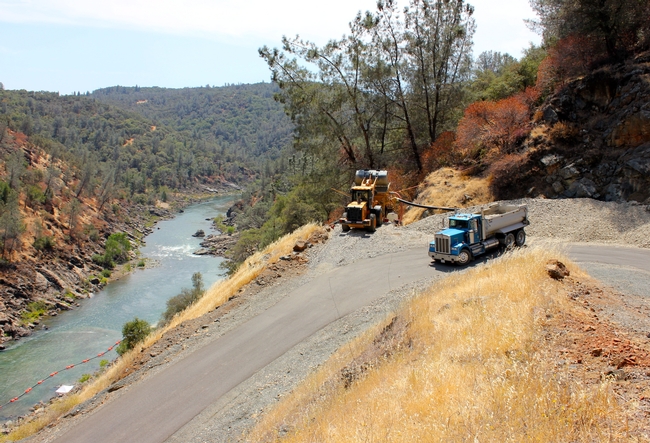- Author: Maddison Easley

A collaborative effort involving the Pasternack Lab at UC Davis, the United States Army Corps of Engineers, the United States Fish & Wildlife Service, Englebright Dam representatives, private contractors, and the UC Sierra Foothill Research & Extension Center has made significant headway in enhancing spawning habitat for anadromous fish on portions of the lower Yuba River. 
Since 2007, more than 15,000 tons of triple washed gravel and cobble has been deposited (watch the time lapse video here) during periods of low flow in the stretch of river downstream from Englebright Dam, between the Narrows II and Narrows I powerhouses. During high flows a portion of this material is washed downstream.
Chinook salmon is the key species this project aims to impact. Ideal conditions for spawning include a flow of 1.5-2 feet per second (fps) and a depth of two feet. With the material deposition, expanded habitat is being created to encourage additional spawning. Even with a very limited volume of coarse aggregate added, over 100 salmon redds were documented between September of 2009 and February of 2010. This finding suggests that with additional deposition, a spring run for the salmon is definitely a possibility. Ultimately, having higher populations of fish will enhance the surrounding ecosystem and benefit all users of the lower Yuba River.
The summertime injections began this season again in late June and will continue until the end of August. Beginning in September, anadromous fish will be seen in the stretches of the lower Yuba to complete their life cycle. 
Sources: UC Davis, Gregory Pasternack Lab



